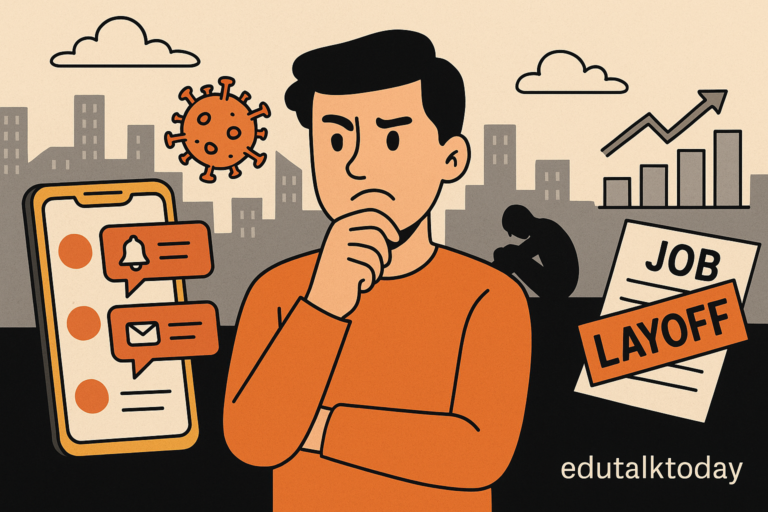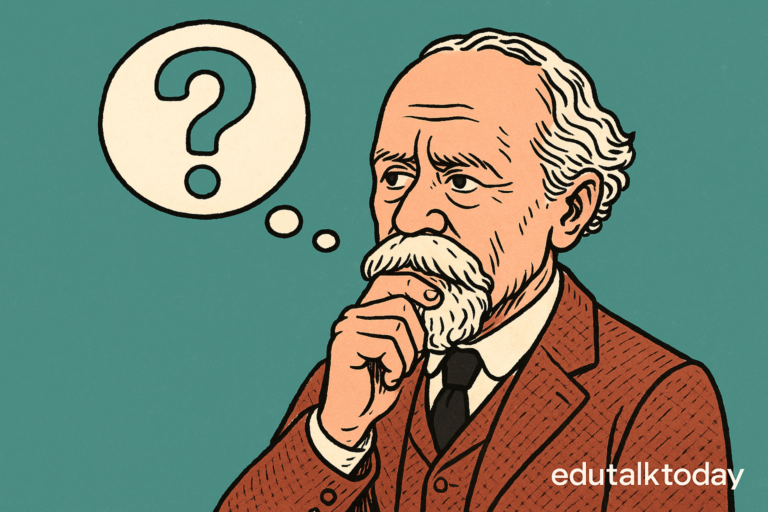Why street smarts and book smarts need each other, and how a pragmatic mindset helps translate abstract knowledge into wise action?

We’ve all heard the cliché: the professor who can lecture on complex theories but can’t fix a flat tire, or the streetwise entrepreneur who can spot a deal in seconds but never cracked open a textbook. It’s easy to buy into this neat division—one group living in their heads, the other surviving on instinct. But honestly, that framing sells both short.
The truth is, street smarts and book smarts aren’t rivals—they’re complementary skill sets that, when combined, create something far more powerful. I’ve seen brilliant academics stumble because they couldn’t adapt theory to messy reality, and I’ve seen sharp hustlers plateau because they lacked the conceptual frameworks to scale what they’d learned by trial and error. So the question isn’t which one is better.
The question is how we can get them talking to each other. And the answer, I’d argue, lies in pragmatism.
When Theory Gets Stuck Without Real Context
Let’s start with the book-smart side of the equation. Don’t get me wrong—I love theory. Frameworks, models, structured ways of thinking—they give us clarity in chaos. But theory can become a trap when it’s treated as complete in itself, as if the world should bend to fit the model rather than the other way around.
Think about economics. On paper, markets should behave predictably: supply and demand curves, rational actors, efficient equilibria. But when the 2008 financial crisis hit, those tidy models didn’t save us. They assumed rational behavior where panic reigned, and they underestimated how messy human psychology could get. In other words, theory without street-level observation crumbled under pressure.
The gap between neat models and messy lives
The same thing shows up in medicine. Medical journals can report on the efficacy of a drug under pristine lab conditions, but doctors in community clinics will tell you the reality is rarely that clean.
Patients forget doses. They mix medications. They don’t follow the diet recommendations. Suddenly, the elegant statistical conclusions meet human chaos—and only practitioners who understand that context can adapt the science effectively.
Management theory gives us another example. Take the “best practice” craze. Consultants love handing out five-step frameworks for leadership or innovation. But if you’ve ever worked inside a company, you know those blueprints often fall apart the second they collide with office politics, cultural quirks, or even just one stubborn department head. The map doesn’t equal the territory—and people who rely purely on the map risk getting lost.
Why abstract knowledge needs grounding
So why does this gap keep appearing?
Because abstract knowledge, by definition, strips away context to highlight patterns. That’s its strength—you can’t analyze without simplifying. But it’s also its weakness. Strip away too much, and you lose the very texture that makes knowledge usable.
Street smarts—those messy, lived experiences—supply the missing texture. Without them, book smarts float above reality like a balloon tethered to nothing.
A personal take
I’ll admit, I’ve fallen into this trap myself. I once tried applying a beautiful decision-making framework to a project team. The logic was flawless—at least on paper. But I hadn’t factored in the unspoken hierarchy in the group, where junior members didn’t feel safe challenging their seniors.
The result?
The framework collapsed because the real decision-making power was invisible in the model. That experience humbled me. It taught me that wisdom lives at the intersection of theory and lived context—not in either alone.
The hidden danger of overconfidence
Here’s the kicker: the smarter someone is on paper, the easier it is for them to miss this. Book smarts breed a subtle kind of overconfidence. If you’ve been rewarded your whole life for mastering abstract reasoning, you can start assuming that reality must behave the way the textbook says it should.
And that’s where the trouble begins. When theory refuses to get its hands dirty in the real world, it stops being knowledge and starts being dogma.
So yes, book smarts matter. They give us the scaffolding to build on. But without grounding in context, they risk collapsing under their own elegance. This is exactly where street smarts walk in—not as a rival, but as the missing counterpart that keeps theory from drifting off into irrelevance.
What Street Smarts Bring to the Table
If book smarts are about building structured knowledge, street smarts are about surviving—and thriving—in the unpredictable. They’re not a rejection of theory but an instinctive way of adapting when the map doesn’t match the terrain.
I’ve worked with plenty of people who couldn’t explain the academic frameworks behind their decisions, but my god, they could spot danger or opportunity faster than anyone else in the room. It’s not luck. It’s a set of deeply honed abilities that often get underestimated simply because they’re harder to formalize.
Pattern recognition
Street-smart people notice the tiny signals most others miss. A subtle shift in a client’s tone, a change in foot traffic on a busy street, a new piece of gossip in the neighborhood—these cues become data points for decision-making. Traders on the floor of an exchange used to rely on these micro-signals long before algorithms dominated. They could “feel” market sentiment through chatter and body language. That ability to read patterns in chaos isn’t just useful—it’s survival.
Adaptive decision-making
If book smarts lean on well-designed plans, street smarts excel at improvisation. I once watched a friend run a pop-up food stall where nothing went right: the supplier was late, the stove broke, and the weather turned sour.
Instead of folding, she reshuffled the menu, borrowed gear from a neighbor, and pivoted her pitch to emphasize the comfort of hot food in the cold. She sold out by the end of the night. That’s not luck—that’s agility under uncertainty, the kind that business schools try to simulate with case studies but rarely capture in full.
Social intelligence
Here’s something you won’t find in a textbook formula: how to walk into a room and know instantly who holds the real power. Street smarts often come down to decoding human dynamics—spotting alliances, reading motivations, figuring out when someone’s bluffing. I’ve seen streetwise negotiators who could dismantle an opponent’s strategy without ever raising their voice, simply because they sensed the other person’s insecurities. That’s wisdom forged in countless real interactions, not in theory.
Practical experimentation
Street smarts are built on trial and error, not abstract proof. Startups embody this: most successful founders didn’t begin with a polished theory of the market; they tested, failed, iterated, and pivoted until something worked. That’s learning through doing, where each small win or setback produces tacit insights you can’t extract from a book. The Lean Startup methodology is essentially an academic attempt to codify what streetwise entrepreneurs were already practicing intuitively.
Tacit knowledge
Some of the most powerful forms of intelligence resist articulation. A veteran carpenter “just knows” how the wood will respond to pressure. A street vendor can tell when to raise prices by the way customers linger or rush past. These aren’t random hunches—they’re deep, embodied expertise acquired through thousands of repetitions. Neuroscientists call this procedural memory, but for practitioners, it’s simply the wisdom of the hands and gut.
Why street smarts get overlooked
The problem is, we tend to value what we can measure, and street smarts don’t lend themselves to neat metrics. You can quantify test scores, publications, or degrees. You can’t as easily quantify someone’s ability to diffuse a tense situation before it explodes or to pivot a failing business in real time. But dismissing street smarts because they’re hard to formalize is like dismissing dark matter because we can’t see it. They’re often the invisible force holding everything together.
Where street smarts alone fall short
That said, street smarts without theory can also hit a ceiling. Relying solely on gut instinct risks becoming reactive rather than strategic. I’ve seen brilliant negotiators struggle to scale their skills into systems others can use, because they lacked the frameworks to codify what they “just knew.” In the same way, small businesses built entirely on hustle can collapse when they try to grow, simply because intuition alone isn’t enough to manage complexity at scale.
So the real magic isn’t in elevating one form of intelligence over the other. It’s in the handshake between street smarts and book smarts, where instinct sharpens theory and theory scales instinct. That’s where pragmatism steps in as the translator.
How Pragmatism Turns Knowledge into Action
Here’s where things get exciting: pragmatism isn’t about compromise, it’s about translation. It’s the mindset that asks: What works in this specific situation, with these constraints, right now? It doesn’t worship theory for its own sake, nor does it glorify gut instinct as infallible. Instead, it insists that the value of knowledge is measured by its usefulness in practice.
Theory meets the test of reality
Think of pragmatism as the stress test for ideas. A book-smart economist might model a new policy, but a pragmatist asks: “What happens when this hits the ground? How will actual people respond?” That doesn’t mean throwing away the model—it means treating it as a hypothesis, not a law. Pragmatism insists that ideas must prove themselves in messy reality, and if they don’t, they’re revised or discarded. It’s science in the wild, not just in the lab.
The feedback loop
Here’s the engine of pragmatism: theory generates hypotheses, practice tests them, and experience feeds back into refined theory. It’s a loop, not a hierarchy. Consider modern medicine again. Clinical guidelines might suggest a treatment path, but a pragmatic doctor adjusts for the patient who can’t afford the full regimen or who reacts badly to a standard drug. Over time, those lived adjustments shape new best practices. That’s pragmatism at work: a continuous dance between abstract rules and lived realities.
Pragmatism as a check against arrogance
Pragmatism also acts as a guardrail. Book smarts risk arrogance in theory, street smarts risk arrogance in instinct. Pragmatism humbles both by demanding results. If your elegant theory doesn’t work in practice, it’s wrong. If your instinctive move backfires, it’s wrong. There’s no hiding behind credentials or charisma. Pragmatism keeps us honest by tying value to outcomes.
Pragmatism in action
Look at the way some of the most innovative companies operate. Amazon’s “two-pizza team” rule wasn’t dreamed up in a textbook. It was a pragmatic solution to the inefficiencies of bloated teams: keep them small enough that two pizzas can feed everyone. Or take Toyota’s production system, built on constant small experiments and adjustments rather than a fixed master plan. These examples show pragmatism not as a watered-down middle ground but as a rigorous discipline of testing, adapting, and evolving.
Why pragmatism is a skill, not a default
It’s tempting to think pragmatism just happens naturally when smart people work. But it doesn’t. It requires cultivating a mindset that’s comfortable with ambiguity, that values both the clarity of theory and the messiness of lived experience. It means building cultures where feedback is prized, failure is data, and no single perspective—academic or streetwise—has the final word. In my experience, that balance doesn’t appear by accident. It’s designed, practiced, and protected.
A personal story
I once worked with a team designing a community health program. The academics had beautiful research on intervention strategies. The local organizers had deep knowledge of the neighborhood. Left on their own, each group would have failed. The researchers’ plan ignored local mistrust of outside experts; the organizers’ instincts lacked scalable structure. But when they worked pragmatically—treating theory as flexible guidance and practice as data—they built a program that actually stuck. That’s the magic: when pragmatism marries the rigor of book smarts with the adaptability of street smarts, things finally work.
Final Thoughts
Street smarts and book smarts on their own are incomplete stories. One without the other is either a blueprint with no building or a hustle with no horizon. What ties them together is pragmatism—the willingness to test, adapt, and translate knowledge into action. If there’s one thing worth carrying forward, it’s this: wisdom isn’t knowing or doing alone—it’s learning how to let knowledge and experience keep each other honest.





